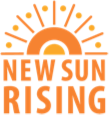I spend a few hours this morning playing The Radix Endeavor, a game designed to help high school teachers lead and assess their students in the content areas of biology, algebra, geometry and statistics. It is in beta testing by MIT Education Arcade (funded by the Gates Foundation in collaboration with Filament Games). It is an MMO (Massively Multiplayer Online) game where you have your own character, an avatar, walk around a virtual world and collaboratively learn biology (collecting plants and testing medication results), statistics (measuring and recording means of plant height for researchers),and geometry (cutting and fitting glass to repair a building). The story line has you join the Curiosi and find solutions to environmental and societal problems, saving the island from destruction.
The graphics were encouraging (not Guild Wars, but better than many other attempts). I can see students becoming engaged, passions ignited, and the potential for collaborative discussion. MMO games have been making their ways into education (teachers using World of Warcraft for comparative writing, another using Minecraft to teach concepts electricity, a publisher making a Latin speaking community available in Second Life).
The Radix Endeavor is already aligned to Common Core standards in math and Next Generation Science Standards for high school students. I am given, as a teacher, the ability to monitor student progress, tailor lessons to student needs, use task-based assessments and triangulate the data with validated external assessments. Massively Multiplayer Online Games are a motivating alternate reality that allow for interaction with other players and collaboration in task-based goals. It supports inquiry based learning.
One of the drawbacks, it is time consuming. I look at the concepts my son’s biology class covered in three weeks: two dense chapters, seventy new vocabulary words, four mini lab explorations requiring extensive portfolios, and only five hours a week. The games would need to be assigned as homework, and be inviting enough to be enjoyed on top of the mile wide curriculum in an already overloaded year. The labs would need to be replaced with the game to make room in student’s overwhelmed schedules. The game does not require (in my brief game play) the rigor of the mini lab exploration portfolios currently in place.
There is always the preference to real world design. It is better to have students actually put rubber gloves on and dig through excrement for real world results and advances, but resources are never enough to allow for this type of hand-on learning throughout a curriculum. Real frog dissection runs several thousand dollars each year. A virtual frog dissection is cheaper, cleaner, knowledge of anatomy is retained longer, and material is learned quicker. But is that enough? There are none of the “oops” moments of cutting too deep or not deep enough, the shared eewww between classmates, nor that grand complement that you should consider life as a surgeon because of your steady hand. I think of the movie line “I learned to drive playing Grand Theft Auto” and bemoan the overconfidence that game play can lead to. But if the alternative is passive learning, I’m all for it.
The Radix Endeavor takes the ideas of virtual frog dissection to the next level, placing it into a narrative story, and allowing for dead end trails and fail sequences for players to conduct “experiments” to discover the systems of biology and math. This is one of the main advantages of an MMO game based class – learning how failure fits into the experience of learning. A high comfort level with failure is needed for risk taking and creative problem-solving, critical 21st century skills.
While teachers (able to explore now) and students (beginning in October) play and explore Radix, students at MIT will be gathering data to examine the effectiveness and efficacy of an MMO for STEM learning. I can imagine (and look forward to) a future where “teaching to the test” becomes preparation to successfully navigate virtual worlds that prepare them for real world research, math, and economic investment.
Other Educational Gaming Opportunities
Ko’s Journey examines middle school math with an Indian child who must make their way in the wilderness.
Dream Flight Adventures installs a simulator (a real magic school bus) that allows classroom participation in integrated standards based STEM material within history, literature, and the humanities with missions such as Lusitania, Succession, Pandemic, Vesuvius, and Insurrection,
Future City using SimCity software to 6th-8th grade Engineering Challenge (this year’s challenge is Transportation and is open for team registration).
Playpower Labs is CMU’s beta test of K-8 math games
Selene is a Lunar Creation Game (I am a registered recruiter for the game and can help your homeschool or afterschool student (ages 9-18) sign up to play).
Game On!





1 comments
1 pings
Very informative article, i am regular reader of your website.
I noticed that your website is outranked by many other blogs in google’s search results.
You deserve to be in top10. I know what can help you, search in google for:
Omond’s tips outsource the work
[…] See on http://www.ellencavanaugh.com […]